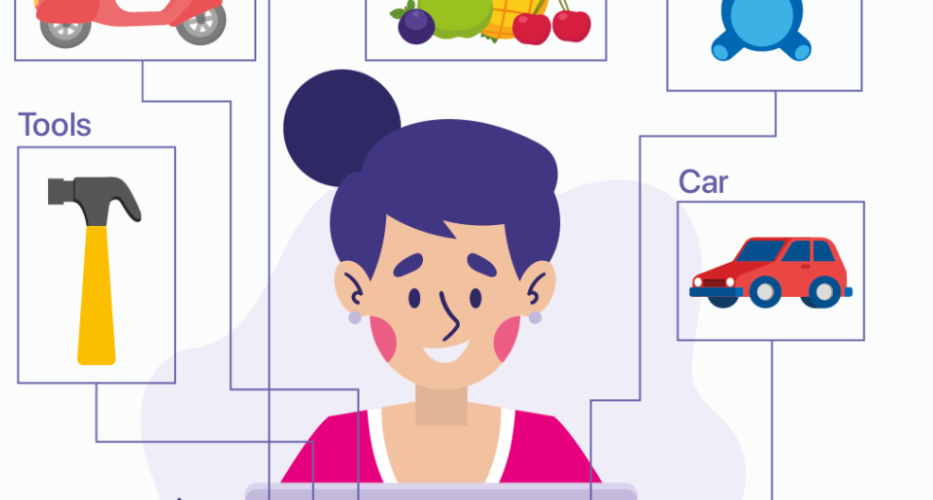In the age of artificial intelligence (AI) and machine learning (ML), data is the fuel that powers innovation. But raw data alone isn’t enough—it needs to be organized, labeled, and structured to make it usable for AI systems. This is where data annotation comes into play. Often referred to as the backbone of AI, data annotation is the process of labeling data to make it understandable for machines.
From self-driving cars to virtual assistants, Annotation processing plays a critical role in training AI models to recognize patterns, make decisions, and perform tasks with human-like accuracy. In this article, we’ll explore what data annotation is, why it’s important, the different types of annotation, and how it’s shaping the future of AI and machine learning.
What Is Data Annotation?

Data annotation is the process of labeling or tagging data to provide context and meaning. This labeled data is then used to train machine learning models, enabling them to recognize and interpret patterns. For example, in an image recognition system, data annotation might involve labeling objects in a photo (e.g., “car,” “tree,” “person”) so the AI can learn to identify these objects on its own.
Data annotation is essential for supervised learning, where AI models are trained on labeled datasets to perform specific tasks. Without accurate and high-quality data annotation, AI systems would struggle to understand and process information effectively.
Why Is Data Annotation Important?
Data annotation is a foundational step in the development of AI and ML systems. Here’s why it’s so crucial:
- Enables Machine Learning: Annotated data is the training material that helps AI models learn and improve over time.
- Improves Accuracy: High-quality annotations ensure that AI systems make accurate predictions and decisions.
- Supports Diverse Applications: Annotation processing is used in various industries, from healthcare and finance to autonomous vehicles and e-commerce.
- Enhances User Experience: Well-annotated data leads to smarter AI applications, providing users with more relevant and personalized experiences.
Types of Data Annotation

Data annotation can take many forms, depending on the type of data and the intended use case. Here are some of the most common types:
1. Image Annotation
- What It Is: Labeling objects, shapes, or regions in images.
- Use Cases: Facial recognition, medical imaging, autonomous vehicles.
- Techniques: Bounding boxes, polygons, keypoints, semantic segmentation.
2. Text Annotation
- What It Is: Tagging text data with labels to identify entities, sentiments, or relationships.
- Use Cases: Chatbots, sentiment analysis, language translation.
- Techniques: Named entity recognition (NER), part-of-speech tagging, sentiment labeling.
3. Video Annotation
- What It Is: Labeling objects or actions in video footage.
- Use Cases: Surveillance, sports analytics, autonomous driving.
- Techniques: Object tracking, motion analysis, event detection.
4. Audio Annotation
- What It Is: Transcribing and labeling audio data.
- Use Cases: Voice assistants, speech-to-text systems, emotion detection.
- Techniques: Speech tagging, noise labeling, speaker identification.
5. LiDAR Annotation
- What It Is: Labeling 3D point cloud data from LiDAR sensors.
- Use Cases: Autonomous vehicles, robotics, augmented reality.
- Techniques: 3D bounding boxes, semantic segmentation.
The Data Annotation Process
The process of data annotation involves several steps to ensure accuracy and consistency:
- Data Collection: Gathering raw data from various sources.
- Annotation Guidelines: Defining clear rules and standards for labeling.
- Labeling: Using tools and software to annotate the data.
- Quality Assurance: Reviewing and validating the annotations for accuracy.
- Model Training: Feeding the annotated data into machine learning models.
Challenges in Data Annotation
While data annotation is essential, it comes with its own set of challenges:
- Scalability: Annotating large datasets can be time-consuming and resource-intensive.
- Accuracy: Inconsistent or incorrect annotations can lead to poor model performance.
- Cost: High-quality annotation often requires significant investment.
- Subjectivity: Some data, like sentiment analysis, can be subjective and difficult to label consistently.
Tools and Technologies for Data Annotation
To streamline the annotation process, various tools and technologies have been developed:
- Open-Source Tools: LabelImg, CVAT, and Prodigy.
- Commercial Platforms: Scale AI, Appen, and Lionbridge.
- AI-Powered Solutions: Tools that use machine learning to automate parts of the annotation process.
The Future of Data Annotation
As AI continues to evolve, so does the field of data annotation. Here are some trends to watch:
- Automation: AI-powered tools will increasingly automate repetitive annotation tasks, improving efficiency.
- Crowdsourcing: Platforms like Amazon Mechanical Turk will continue to play a role in large-scale annotation projects.
- Specialized Annotation: As AI applications become more niche, the demand for specialized annotation services will grow.
- Ethical Considerations: Ensuring data privacy and ethical labeling practices will become a priority.
Conclusion
Annotation processing is the unsung hero of AI and machine learning, providing the labeled data that powers intelligent systems. From image and text annotation to video and audio labeling, this process is essential for training accurate and reliable AI models.
As technology advances, the demand for high-quality data annotation will only increase. By understanding its importance, challenges, and future trends, businesses and developers can harness the power of Annotation processing to build smarter, more efficient AI systems.

